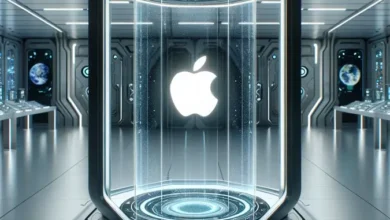How to Build an Effective AI Presentation Strategy for Corporate Teams
In today’s fast-paced corporate world, effective communication is more crucial than ever. Teams constantly need to relay ideas, reports, and results in ways that are both engaging and informative. AI tools have become valuable allies in this process, especially for crafting presentations that can capture attention, streamline information, and make data more digestible. Building an AI-driven presentation strategy for corporate teams not only saves time but also ensures consistent quality and professionalism. Here’s a comprehensive guide to constructing a winning AI presentation approach that aligns with corporate goals.
Understanding the Benefits of AI in Corporate Presentations
AI-powered presentation tools bring several benefits to the table. They can automatically design slides, suggest layouts, and even generate insights from data, reducing the burden on team members. For corporate teams, this means less time spent formatting and more time focusing on the content that matters. Additionally, AI tools can help with translation and voiceover services, making presentations accessible to diverse teams and global audiences. Understanding these benefits can help team leaders see the value in adopting AI for presentations and set a solid foundation for their strategy.
Identifying Presentation Goals and Objectives
Before jumping into any tool or AI platform, it’s essential to identify the specific goals for your presentations. Are you primarily looking to inform, persuade, or educate your audience? Different objectives will shape how the AI tools are used and what features are prioritized. For instance, if the goal is to pitch a project to stakeholders, an AI-powered storytelling tool can enhance the presentation’s narrative quality. Conversely, for team training sessions, tools that prioritize clear visuals and data analysis might be more effective. Defining these goals upfront will help streamline your strategy.
Choosing the Right AI Tools for Presentations
The success of an AI presentation strategy hinges largely on the tools selected. Today, numerous AI presentation tools offer features tailored for different corporate needs, such as slide automation, design suggestions, voiceovers, and data visualization. Some popular options include tools like Invideo AI, Beautiful.ai, Canva, and PowerPoint’s AI design capabilities. When choosing tools, look for features that align with your team’s needs. For instance, if data-heavy reports are common, a tool with advanced data visualization would be invaluable. Choosing the right tools early on can maximize efficiency and enhance the final presentation quality.
Setting Up a Workflow for Presentation Creation
A well-defined workflow ensures that presentations are created, reviewed, and refined efficiently. Start by defining each step in the presentation creation process, from brainstorming and data collection to design and final review. Decide which stages will utilize tools like an AI PPT maker and which will require human input. For example, AI can handle initial layout designs and suggest visuals, while team members can focus on crafting the narrative. This hybrid approach leverages AI to save time while ensuring that the final product reflects the team’s voice and vision. Documenting this workflow also makes it easier for new team members to adapt.
Designing Presentations with Consistency and Branding in Mind
Corporate presentations often need to adhere to brand guidelines to maintain a cohesive image. AI tools can help that match brand colors, fonts, and logos, ensuring that every slide reflects the company’s identity. In addition, some AI tools allow users to save brand-specific settings, making it easier to maintain consistency across different presentations. For corporate teams, this consistency is critical, especially when presenting to clients, stakeholders, or across departments. By integrating brand elements into your AI presentation strategy, you can reinforce brand identity in every presentation without spending extra time on design details.
Incorporating Data Visualization for Impact
Data is central to most corporate presentations, but presenting it effectively can be challenging. AI-driven data visualization tools can transform raw data into charts, graphs, and infographics that are easier to understand. Using these features not only makes the information more accessible but also adds a professional touch. For example, AI tools can analyze data trends and suggest the best formats for displaying information, whether it’s a bar chart for financial figures or a line graph for growth trajectories. These visual aids can make complex data more engaging, helping audiences grasp key points more quickly.
Leveraging AI for Audience Engagement
Beyond designing slides, AI can also be used to gauge and improve audience engagement. Some AI tools can analyze audience reactions in real time, tracking metrics such as facial expressions and engagement levels. Others provide insights after a presentation, indicating which parts were most impactful or where attention lagged. By using this feedback, corporate teams can refine their presentations, focusing on areas that resonate with the audience. This ability to measure engagement ensures that presentations are not just informative but also engaging, allowing teams to make a lasting impression on their audience.
Ensuring Accessibility with AI
AI has opened new doors for creating accessible presentations, making it easier to include captions, translations, and voiceovers. This aistudios especially valuable in diverse corporate environments, where employees or clients may speak different languages or have varying accessibility needs. With AI-driven captioning and translation tools, presentations can be adapted in real-time or post-production, ensuring everyone in the audience has equal access to the information. Adding these accessibility features also demonstrates inclusivity, which is a core value for many organizations today.
Training Team Members to Use AI Tools
The effectiveness of an AI presentation strategy depends on how well team members understand and utilize the tools available to them. Providing training sessions on how to use AI tools can empower employees to leverage the technology fully, from basic design elements to more advanced features like data visualization and audience analytics. Consider creating a training program or manual that covers key functions and best practices for each tool. By building a foundation of knowledge within the team, you ensure that everyone can contribute to creating high-quality, AI-driven presentations.
Integrating AI with Other Corporate Tools
To maximize efficiency, integrate AI presentation tools with other corporate software, such as project management platforms or data analytics tools. For example, if your team uses a CRM system, an AI video generator app can pull relevant client data directly into the presentation, saving time and improving accuracy. Integration ensures that presentations remain up-to-date and that teams don’t have to waste time transferring information manually. This streamlined approach makes it easier to create comprehensive, data-rich presentations that provide real-time insights and value for the audience.
Regularly Reviewing and Updating the Strategy
As with any corporate strategy, it’s important to regularly review and adjust your AI presentation approach. Technology is constantly evolving, and new tools are frequently released, offering improved features and capabilities. Schedule regular evaluations of the tools and workflow to see what’s working and where there might be room for improvement. Gathering feedback from team members and audiences can also provide valuable insights into how the strategy can be optimized. By keeping the strategy flexible, you ensure that your presentations remain cutting-edge and aligned with corporate objectives.
The Role of AI in Supporting Corporate Communication
The ultimate goal of any presentation strategy is to facilitate effective communication. AI helps achieve this by simplifying complex tasks, making presentations more visually appealing, and ensuring consistent quality. However, AI should be seen as a tool that supports rather than replaces human creativity. Teams should continue to focus on crafting compelling narratives and engaging stories, using AI to enhance these elements. By striking a balance between AI capabilities and human input, corporate teams can create presentations that are both informative and memorable.
Final Thoughts on Building an AI Presentation Strategy
Incorporating AI into your presentation strategy is an investment in both time and resources, but it can pay off significantly in terms of productivity, engagement, and communication quality. From choosing the right tools to setting up a structured workflow and focusing on consistent branding, each step is crucial to building a strategy that works for your corporate team. As AI technology continues to evolve, the potential for creating impactful, visually appealing, and data-driven presentations will only grow. Embracing these changes can position your team at the forefront of corporate communication innovation.



